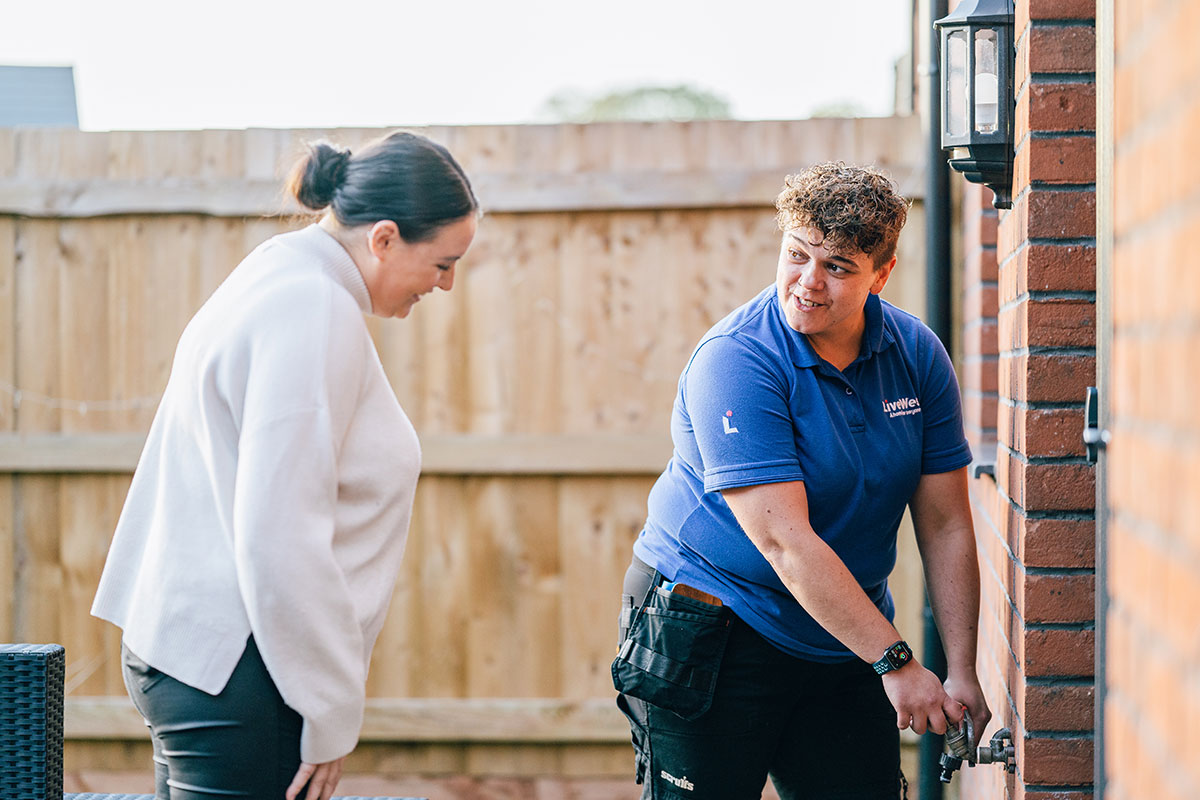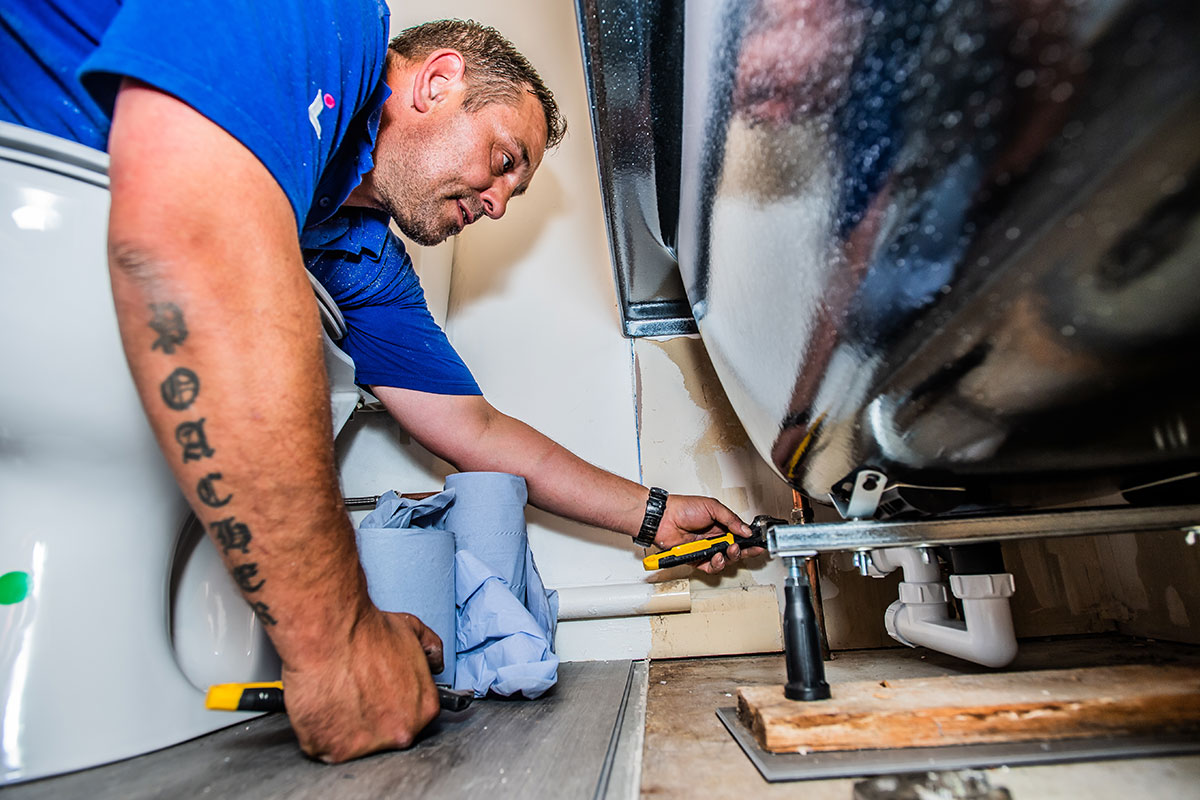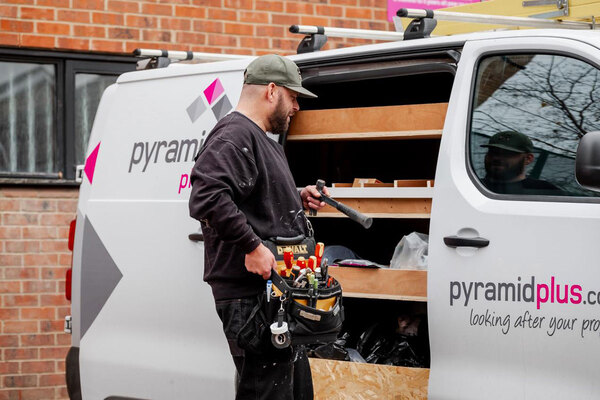You are viewing 1 of your 1 free articles
The DLO dilemma: the choice between outsourcing repairs or doing them in-house
Doing repairs in-house is increasingly popular with social landlords. Jess McCabe looks at data from HouseMark and speaks to landlords and contractors to find out what the advantages are, and why outsourcing is still the best option for some
More and more social landlords are setting up their own in-house repairs services.
Consultancy Housemark says that 50% of UK landlords operated a direct labour organisation (DLO) in 2013. That figure is 61% today.
This will not surprise anyone who has been following repairs over the past decade. In the mid-2010s, landlords big and small made the move in-house. Clarion set up its DLO in 2018, at that time carrying out repairs for 18,000 of its homes. Clarion Response now does responsive repairs for 90,000 properties, with contractor Equans looking after the rest of its 125,000 homes.
Councils, too, started to follow suit. In October 2018, Southwark Council brought its repairs service in-house from Mears for its then 37,000 homes. And the trend has only continued, sometimes fuelled by landlords seeking to take tighter control of their repairs services (see box: The in-housers).
But are DLOs actually better than contractors at carrying out repairs? What are the benefits and drawbacks? Inside Housing asked Housemark to dig into its data to find out. We also spoke to landlords that have made the move and some of the big contractors.
Housemark looked at data from 246 landlords across the UK, including councils and ALMOs, as well as housing associations. On cost, DLOs come out a little more expensive at £515 per property, compared with £509 for outsourced repairs.
But on tenant satisfaction with repairs, the numbers suggest DLOs are ahead (see table below).
“A well-managed contractor that’s the right fit for a landlord is going to be just as good as a well-managed DLO,” says John Wickenden, research manager at Housemark. “Badly managed contractors and badly managed DLOs are going to produce poor results as well. There are so many variables that go into it, it’s impossible to say it’s better to do one thing or another.”
Satisfaction scores
| Measure | In-house | Outsourced |
| Transactional satisfaction with repairs service | 88.5% | 80.4% |
| Satisfaction with the overall repairs service over the past 12 months (perception survey) | 81.2% | 78.0% |
| Overall satisfaction with landlord (TSM TP01) | 81.1% | 80.8% |
Source: Housemark
Talking to landlords that have DLOs, it’s clear that they believe in-house is better – for them.
B3Living, which has around 5,500 homes, has a DLO it says is successful, in part, because its stock is concentrated in one area: Broxbourne and south-east Hertfordshire. Chris Ellison, executive director of operations at B3Living, says: “A lot of our staff come from that area. And a lot of our staff have worked with us for a long time.
“Particularly, we find elderly and vulnerable customers really like seeing the same person come back and exchange stories. I’ve never worked anywhere that’s had as many compliments for DLO staff as we do each week. I mean, it’s literally one or two a day. [In other workplaces] we used to get one or two a year, so I think there’s definitely a value there.”
Social landlords list quality control over repairs and tenant preference as the two main benefits of DLOs. Another factor is that DLO staff can be brought into the culture of the organisation.
Jesse Meek, executive director of asset strategy and sustainability at housing association Settle, describes these culture benefits as “being able to have one set of corporate values and one set of key objectives that we all, from trade colleagues through [to] the housing teams, the asset management teams through [to] the finance teams, sign up to”.
“Ultimately, if you’ve got the ability and the resource to manage your own people, why wouldn’t you? It’s the number one service for customers. It’s what matters the most”
He adds: “We have a real brand identity, because we have that closeness to the direct labour organisation. [It’s not] just the customer’s feedback around satisfaction; I think there is a sense of trust that we’re a local employer.”
Riverside has 56,000 homes spread across the country. Its DLO story started in 2011, when it acquired Evolve, a family-owned firm in Liverpool that had been one of its contractors. Ian Gregg, Riverside’s executive director of asset services, was brought in to expand this service in 2014.
Within a few years, Evolve was taking on repairs for “anything from Carlisle in the North down to Northampton in the Midlands”, he says, or around 80% of the association’s stock. This includes responsive repairs, preparing empty homes for reletting, gas servicing and, where stock density allows, planned works such as kitchen and bathroom replacements.
Riverside wanted to replicate this success with its homes in the South of England, and set up Riverside Direct, a wholly owned subsidiary, in a ‘five-plus-five’ contract with Mears, meaning a contract for five years, with the option to extend it for another five. Mr Gregg says Riverside’s merger with One Housing Group in 2021 made its southern DLO much more effective, as it increased the density of homes in the South of England.
In August, when the five years are up, Riverside will bring the service in-house fully. Mr Gregg notes that, in-house, repairs don’t have to pay VAT, so there is a significant saving. “Ultimately, if you’ve got the ability and the resource to manage your own people, why wouldn’t you? It’s the number one service for customers. It’s what matters the most,” he says.
The in-housers
- 19,000-home BPHA began bringing repairs in-house in October last year, and plans to add voids and electrical repairs this year. In April 2024, it plans a final phase, bringing kitchen and bathroom work and minor adaptations in-house, and increasing its operative team to 126.
- Powys County Council terminated its joint venture with Kier, bringing its repairs service in-house in July 2022. This was at the end of a five-year contract, which included housing and building maintenance, and consultancy for new projects.
- Hyde announced last autumn that it would bring repairs and maintenance in-house for 11,000 homes in London, forming Property Maintenance London, a new in-house contractor. Mears, the previous contractor, will continue to deliver repairs to its Peterborough homes, according to Construction Enquirer.
Tai Tarian has a 150-person DLO, which covers responsive repairs, some voids and adaptations, roofing and grounds maintenance.
“[If] you costed it outright, based on schedule rates or something like that, you may find that our DLO was higher [cost],” says operations manager Esther Harris. “But then if you cost the bolt-ons that we end up doing – because we do stray into the realms of, ‘What’s a housing function?’ – you start to stray into things a contractor will not do.”
In one case, an electrician went to fix a socket and realised there was no flooring and the tenant needed financial help. They were able to use a special reporting app on their tablet and the landlord was able to intervene sensitively. (Ms Harris points out that this has to be done carefully, so that the tenant doesn’t connect any visit or intervention to the operative, as they might have to return for further repairs.)
LiveWest has increased the insourcing of repairs rapidly in the past couple of years. In April 2021, LiveWest had an in-house team of 275, but repairs around Bristol had been outsourced to five contractors. Last year, the 39,000-home landlord brought these contracts in-house in a staged process, covering responsive repairs, voids, kitchen and bathroom works, and gas and electrical repairs.
Liane Sheppard, its director of property services, was brought on board to accelerate this process, and has appointed 100 staff members, including tradespeople and managers.
On quality of repairs, Ms Sheppard says its external contractors delivered a tenant satisfaction rating of 86.9% (well above Housemark’s average figures). But those done by its own team have a rating of 94.2%.
On overall satisfaction with repairs and maintenance, external contractors score tenant responses of 80.6% and in-house 83.6%. “[Tenants] like having our in-house team in their houses,” she sums up.
Repairs contractors have a very different take.
Alan Long, executive director of Mears, says: “We haven’t had a single case of a housing association bringing a contract in-house from Mears because of disrepair.”
Staffing the service
Hiring good operatives is key to a successful DLO – not an easy job given the skills shortages at present. Ms Sheppard says that when LiveWest made the move in-house, out of 100 contractor staff only 25 were put on the list to TUPE, or transfer over to the DLO. This left LiveWest to hire around 70 staff.
“It was a really interesting discussion about who’s gone on the TUPE list. And we actually ended up with some people applying outside from the contractor to come to us,” she adds, in a sign of how tight the labour market is at the moment, and the demand for quality staff.
“We had adverts on petrol pumps in some of the superstores in the Bristol area. We started advertising on our vans. So it was word of mouth,” Ms Sheppard says. LiveWest also set up a “change your career” campaign, to encourage people to retrain, and pay a real living wage to apprentices.
Mr Ellison at B3Living says that many of its operatives are older tradespeople, who previously ran their own businesses. “They didn’t want to do all the invoicing and the quoting, they just wanted the next 10 years to be PAYE,” he says. “That gives us a quality, whilst it gives us a risk that we’ve got an ageing workforce.”
B3Living has been supplementing this workforce by taking on younger staff and utilising its experienced workforce to train them. This is through apprenticeships and through entry-level labourer jobs – some of whom it has then sent on for trades training if they demonstrate an aptitude.
He also says that, while the average satisfaction ratings for repairs are about 80% according to Housemark, “Mears is 88% for repairs and we’re the biggest repairs provider”.
Do Housemark’s figures and the list of landlords setting up DLOs suggest that social landlords are increasingly opting for in-house rather than outsourcing repairs?
“There is an increase in insourcing, but not a material change,” Mr Long says.
He also notes that social landlords have put out some of the biggest-ever repairs contracts to tender in recent months, including Birmingham City Council for £1.4bn.
Simon Will, managing director of United Living Property Services, another large repairs contractor in the housing sector, says: “We’ve not actually experienced this at United Living. We’ve recently been awarded a major new repairs contract from a service provider and have also had contract extensions on a number of our existing contracts. We have even taken over another part of a region from one of our clients’ existing DLO.”
Even the housing associations that are most enthusiastic about their DLOs say an in-house team can’t cover everything.
“There are some areas where we think, ‘OK, we can do that, we can skill up’. Others, contractors may be better placed to deliver,” says Ms Sheppard.
DLOs might not be right for all landlords, either. But whoever is delivering the work, landlords will be focused on one thing: making sure it is a good repairs service.
Sign up for our asset management newsletter
Already have an account? Click here to manage your newsletters













